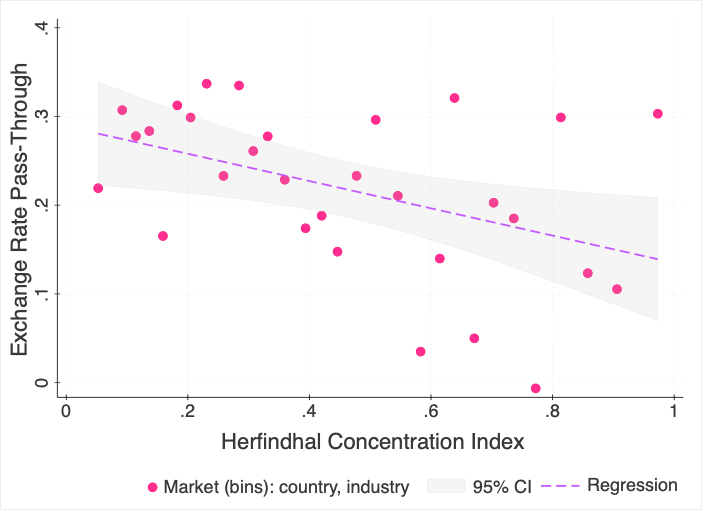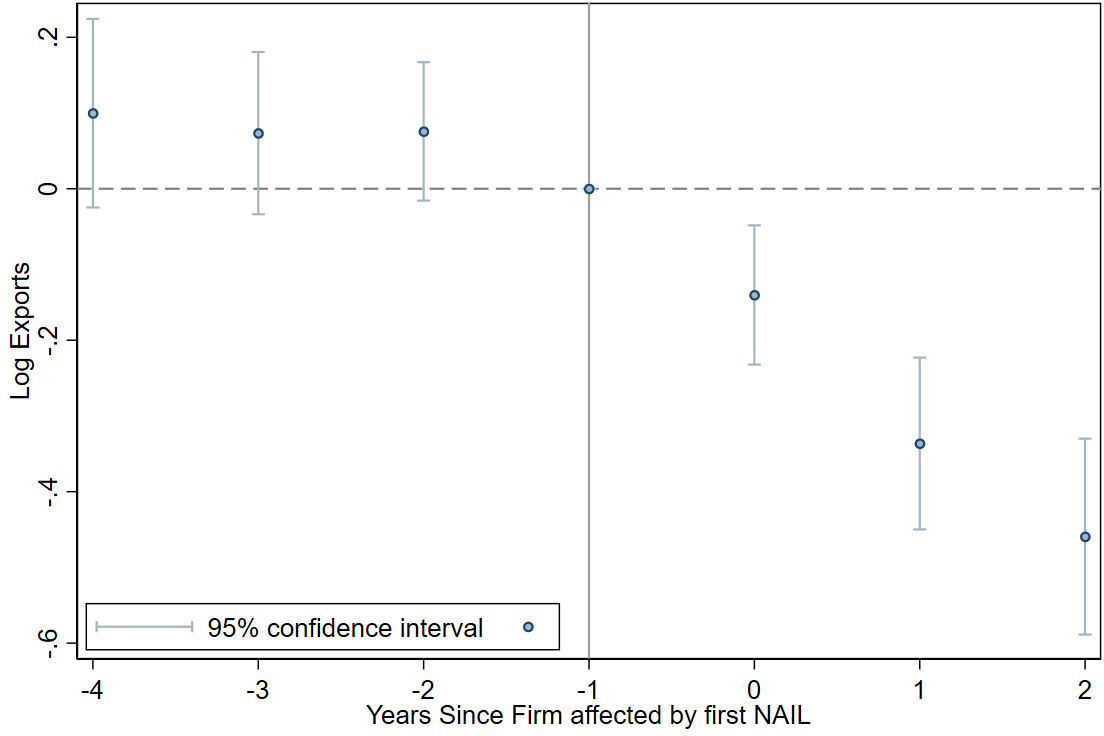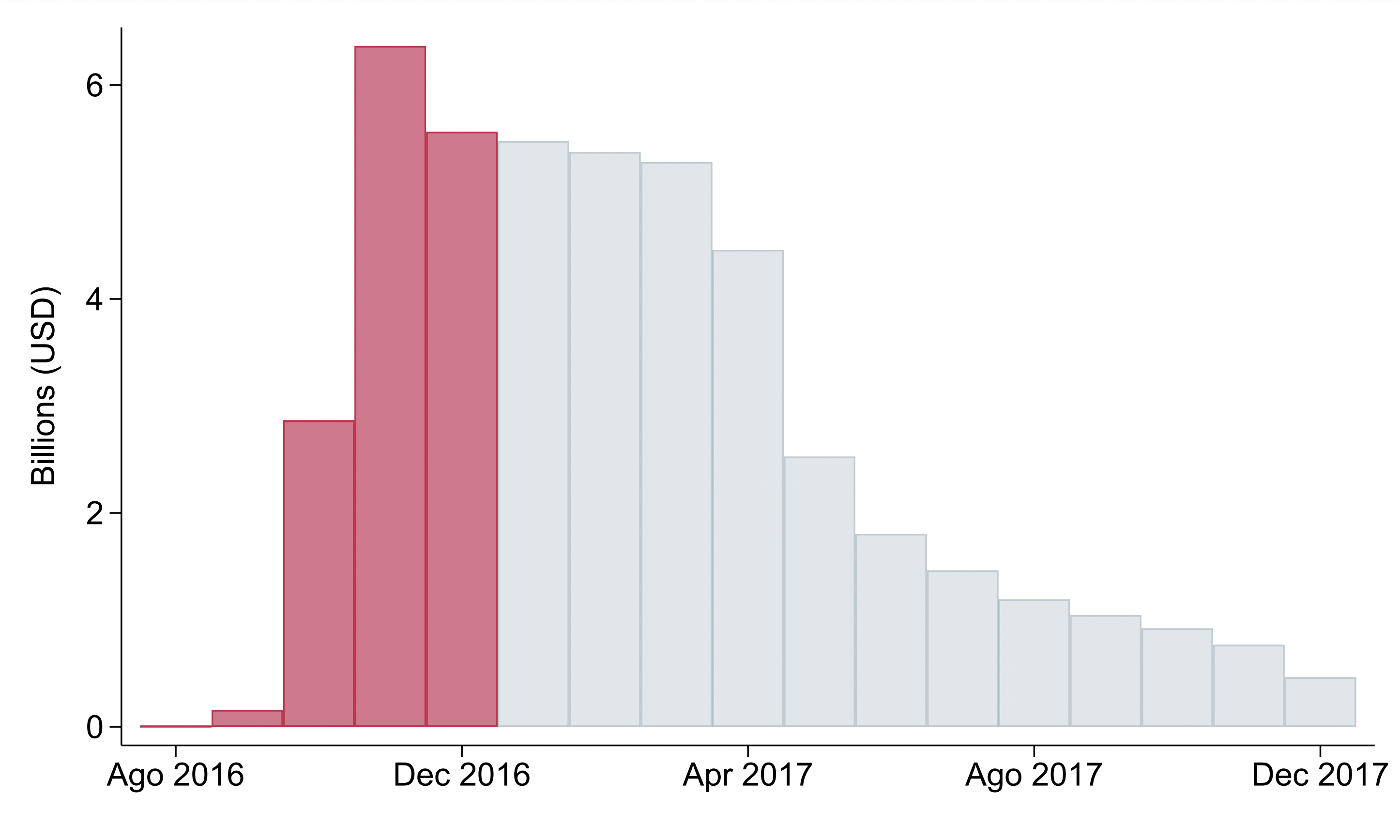Abstract: This paper studies how the effects of exchange rate shocks on international prices vary with trade credit. We put together a dataset that contains customs data and bank statements for the universe of Chinese exporters for the period 2001-2012. We start by documenting some stylized facts. First, we observe substantial complementarity between trade credit and bank loans. Second, the interests paid by exporters to domestic banks respond to exchange rate shocks. Third, exporters’ international prices respond significantly less for products sold by exporters issuing more trade credit (more complete exchange rate pass-through). Motivated by these stylized facts, we model an open economy with heterogeneous firms. In the model, exporters in the home country borrow from domestic banks to finance their production activities, which translates into a credit premium in their export prices. This paper introduces a trade credit premium channel: exchange rate shocks affect domestic banks’ expectations of exporters' profits, and, in this way, impact interest rates (financial costs) offered to exporters. The changes in interest rate affect the international prices charged by these exporters. With the estimates from the model, we conduct the following counterfactual: reduce financial frictions between banks and exporters.



